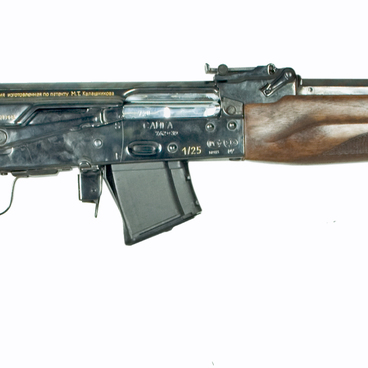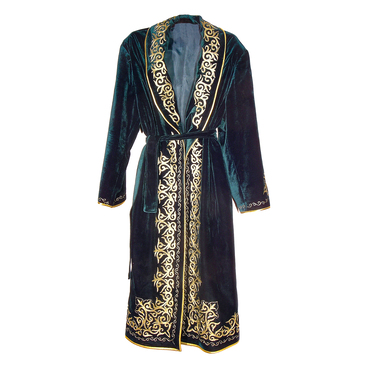The Union of Soviet Socialist Republics Supreme Soviet was the highest representative and legislative body of state power from 1938 to 1991. During the sessions, the Supreme Soviet was considered as the formal collective head of state. At various times, it included from 542 to 1556 deputies, who were elected by direct secret non-alternative vote.
In the case of the anon-alternative type of election, deputies voted only for or against the proposed candidate. In the USSR, this method was used from the mid-1920s until 1989.
The Supreme Soviet consisted of two equal chambers — the Soviet of the Union and the Soviet of Nationalities. The latter represented not directly nationalities, but national territories of all levels — Union republics, autonomous republics, regions and districts.
After receiving the Stalin Prize and moving to Izhevsk in 1949, Mikhail Kalashnikov was elected a deputy from the Udmurt Autonomous Soviet Socialist Republic (UASSR) to the Council of Nationalities of the Supreme Soviet of the USSR of the third convocation (1950-1954). He was just over 30 years old, he had not yet joined the Communist Party and had just started working in the department of the chief designer of a machine-building plant.
According to article 40 of the Law “On the Status of People’s Deputies in the USSR”, the deputy received a certificate and a badge from the Supreme Soviet, which he could use during the entire term. The badge, which was awarded to Kalashnikov in 1966, is kept in the collection of the Museum and Exhibition Complex.
Kalashnikov was a deputy of the Supreme Soviet of the USSR for five convocations (1966, 1970, 1974, 1979, 1984 years), worked in the standing committee on industry and in the planning and budget commission. According to him, he “observed the entire evolution of this institution of power.”
In his memoirs, the engineer wrote,
In the case of the anon-alternative type of election, deputies voted only for or against the proposed candidate. In the USSR, this method was used from the mid-1920s until 1989.
The Supreme Soviet consisted of two equal chambers — the Soviet of the Union and the Soviet of Nationalities. The latter represented not directly nationalities, but national territories of all levels — Union republics, autonomous republics, regions and districts.
After receiving the Stalin Prize and moving to Izhevsk in 1949, Mikhail Kalashnikov was elected a deputy from the Udmurt Autonomous Soviet Socialist Republic (UASSR) to the Council of Nationalities of the Supreme Soviet of the USSR of the third convocation (1950-1954). He was just over 30 years old, he had not yet joined the Communist Party and had just started working in the department of the chief designer of a machine-building plant.
According to article 40 of the Law “On the Status of People’s Deputies in the USSR”, the deputy received a certificate and a badge from the Supreme Soviet, which he could use during the entire term. The badge, which was awarded to Kalashnikov in 1966, is kept in the collection of the Museum and Exhibition Complex.
Kalashnikov was a deputy of the Supreme Soviet of the USSR for five convocations (1966, 1970, 1974, 1979, 1984 years), worked in the standing committee on industry and in the planning and budget commission. According to him, he “observed the entire evolution of this institution of power.”
In his memoirs, the engineer wrote,



